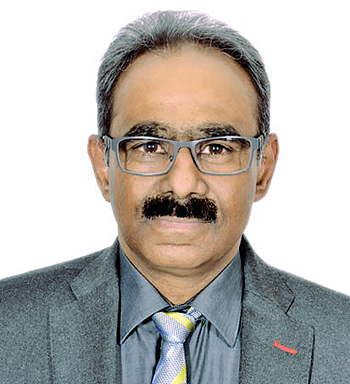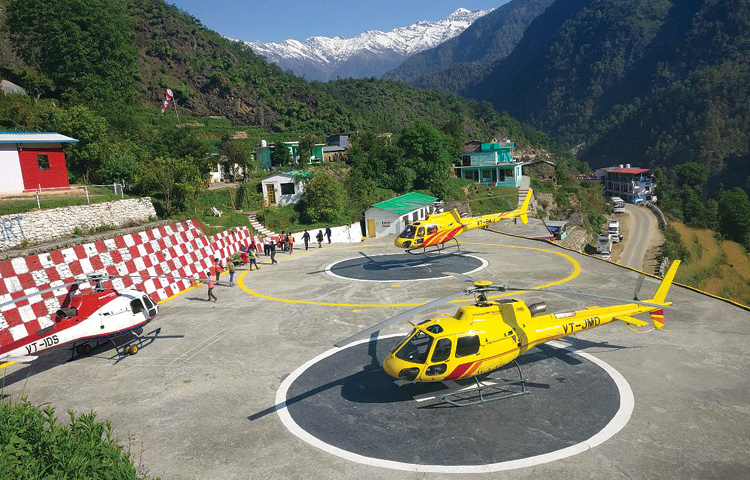EXCLUSIVE
‘The two paradigms of charter business – business jets and helicopters, have come of age in the last decade’
Harsh Vardhan Sharma, Director, Himalayan Heli Services, in conversation exclusively with BizAvIndia

BizAvIndia (BAI): How has the charter business in India evolved in the past decade?
Harsh Vardhan Sharma (Sharma): The two paradigms of charter business – business jets and helicopters, have come of age in the last decade which is very much evident from the increase in the number of operators vis-à-vis the aircraft. Business jets primarily cater to segments such as corporate, holiday and air ambulance whereas helicopters serve are serving tourism and aerial work segments. Talking first about business jets, interestingly, although in the last three years, more business jets have been deregistered than added to the Indian registry, but charter business has been growing more than 20 per cent. The reason for jets going off from the Indian registry is due to lack of parking space in Mumbai and Delhi airports. High congestion in the scheduled air traffic and obnoxiously high parking fee compounded by monopolistic practices promoted by the Airport operator licensees restrict maintenance of your own aircraft. Despite these serious impediments in the growth, in the last three years, this segment has grown with the entrance of on-line charter on-line charter aggregators such as JetSetGo and Book My Charters optimising the empty legs of the journeys and making Charter pricing more reasonable.
On the other hand, the growth of helicopter segment has been significant since demand has been steadily increasing, especially in pilgrimage tourism over the last 10 years. This has resulted in entry of more operators from 3-4 to 14-15 at present.
BAI: Which segment of Charters appears to be growing the most?
Sharma:
- Air Ambulance is still at a nascent stage and gradually become more organised.
- Adventure Sport Charter is fairly stagnant.
- Tourism Charter is growing gradually with more and more operators introducing heli-rides services.
- Pilgrimage Charter is growing the most at more than 20 per cent every year.
- Holiday Charter has slowed down as there is growing focus on promoting holiday destinations through regional connectivity.
- Corporate Charter is growing at more than 20 per cent.
- Political Charter is also growing at a steady pace.

BAI: How do you perceive the opportunities that come with political campaigning?
Sharma: The charters for political campaigning is seasonal, thus always considered a bonus.
BAI: India is taken as a cost-sensitive country. Do you find the business still sustainable and growing? Can you elaborate?
Sharma: The cost factors are pretty much universal. However, it is the high indirect taxation that breaks our costs and causes temporary slow-down.
BAI: How do you perceive the regulations/regulatory bodies in India? Have they evolved with time?
Sharma: The regulatory bodies in India have certainly evolved with time. Currently, there is a robust system in place where we, as an industry trade body, meet periodically with the Ministry of Civil Aviation (MoCA) and the DGCA to discuss about Policies and Regulatory issues.
The growth of helicopter segment has been significant since demand has been steadily increasing, especially in pilgrimage tourism over the last 10 years
BAI: Do Indian charter companies have a level playing field with charter companies that offer services to India clients with foreign registered aircraft? If not, why so, and what must be done to make the level playing field?
Sharma: We don’t have the level playing field w.r.t. foreign charter companies basically on account of taxation issues. Due to thin profit margins in charter operations, the higher GST rate on charters restricts Indian operators to offer competitive rates. This needs rationalisation by GST council and BAOA is taking up this issue through MoCA and industrial bodies like CII/FICCI.
BAI: How do you see this Industry evolving in the next five and 10 years?
Sharma: I am absolutely confident that we can keep up this growth rate and further improve it if Ministry of Power and Ministry of Home, who have good work potential, decide to review their outdated tender conditions, floated to meet their charter requirements pending since many years.
BAI: Would you like to list down top three steps that need to be taken by the concerned authorities and the government at large which can help a greater spark of growth in your business making a Sun Rise sector?
Sharma: First and foremost, 18 per cent GST slab applicable for Charters must be revised to 5 per cent.
Second, ATF be brought under GST regime. Third, import duties on aircraft must be removed as early as possible.





